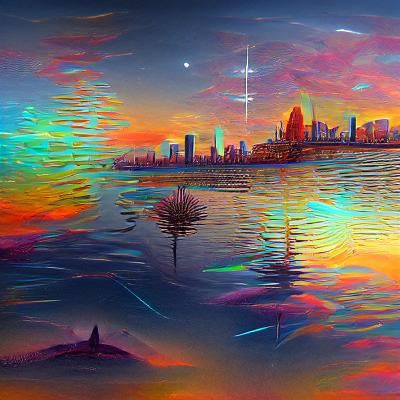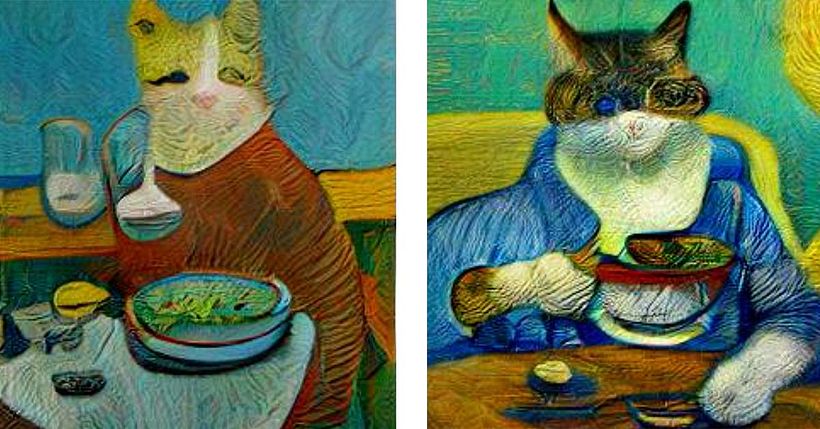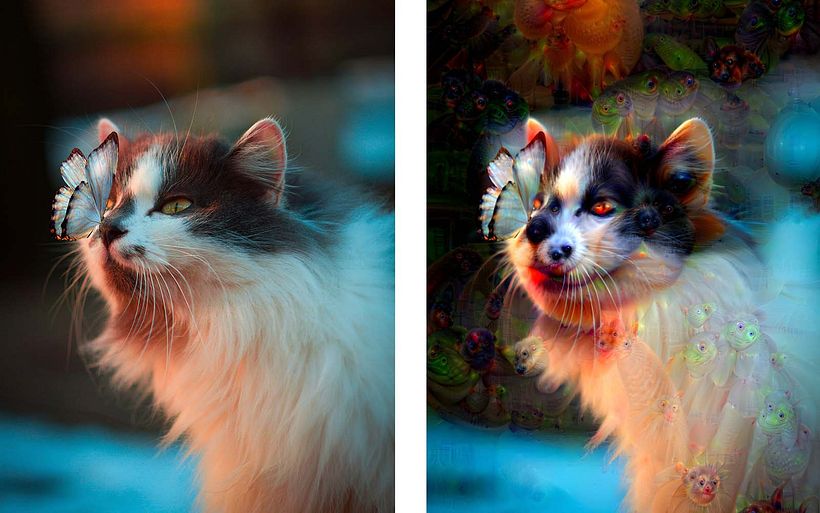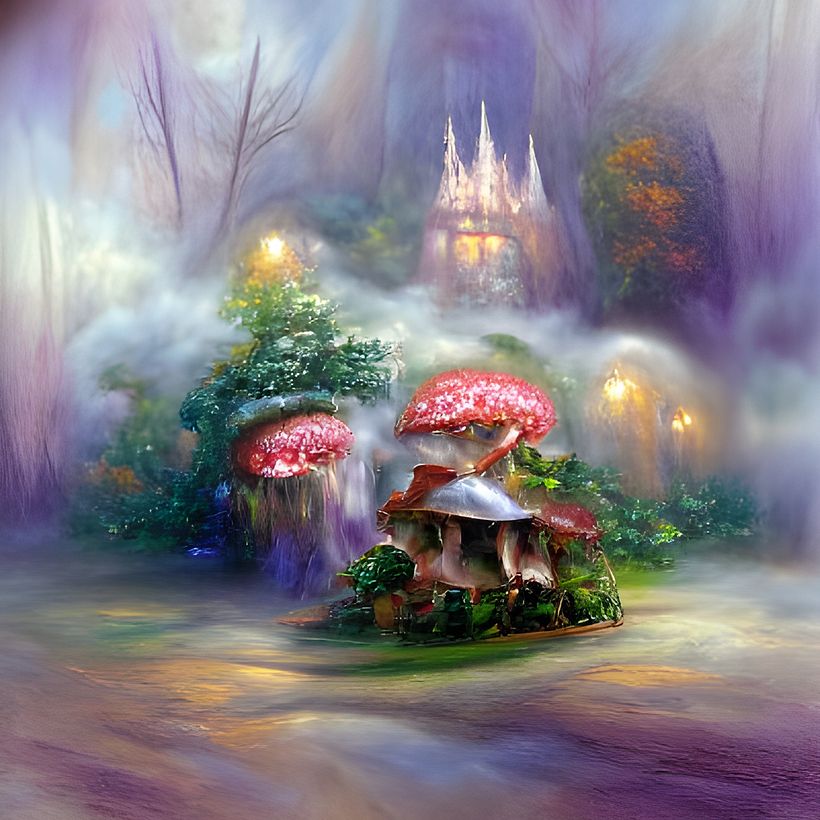3 Free Online Tools to Make AI Art (And Memes)

Learn about viral text-to-image AI art generators like Craiyon (formerly DALL-E Mini), and how to use these easy tools to create original imagery
Have you ever wondered what Star Wars would have been like if it was set in The Shire? And it was put through a Gustav Klimt filter? Well, with just an internet connection and thirty seconds, you can now get an answer.
Craiyon, Deep Dream Generator, and NightCafe are among the popular, free AI tools being used to create original images that are going viral as memes on social media in 2022. Here, we’ll explore what these tools actually do, how they can enhance the creative process, and how to start using them.
Oh, and just in case you were actually wondering…

What do these tools do, and what should I use them for?
Each of these three tools uses AI technology, where a computer model refers to a large bank of data to recognize patterns and generate images by discerning what’s a good match. Rather than understanding what the images actually are, or what your prompts mean, the models are learning from existing imagery to then create something new, pixel by pixel. Some edit an existing image, while others create wholly new images.
However, this of course means that any biases or errors from the human creator also currently end up in the model. Using words related to “business” in Craiyon, for example, tends to result in male-appearing figures. The internet is not a true representation of reality, of course, so neither are these models.
But awareness and improvement increase every day, and the potential uses of this tech are exciting and mind-boggling. Generating digital art assets more quickly, iterating on ideas, creating more original and unique reference imagery for your own art: the list goes on. And, of course, a recent popular use has been to create some of the trippiest memes you could imagine. So without further ado, let’s investigate three of the most popular AI tools available online right now.

1. Craiyon (formerly called DALL-E Mini)
This tool is commonly known by its first nickname, "DALL-E Mini". But it is not actually affiliated with DALL-E—OpenAI’s system that generates realistic imagery from natural language prompts (which is currently closed to the public and has a long waiting list).
"DALL-E Mini" is an independent project hosted on Hugging Face, and now relaunched with a new website: Craiyon. What makes it special is that it’s based on DALL-E’s text-to-image approach, but is open access and free to use.
It’s no surprise then that this tool has exploded onto the scene as of June 2022, as the leading source of AI memes. All you need to do to get started is to open the site and type a text prompt that becomes a command for the AI, which sifts through its database to evaluate the prompt and “create” a wholly new set of nine relevant images. It’s by far the simplest and most accessible tool on this list.
Tips for using Craiyon:
- Be specific. Tell Craiyon the exact colors, dog breeds, artistic styles, and details of what you would like to see.
- Use clear grammar, for example, “A cat sitting on a bench in the style of Van Gogh”. Try to avoid ambiguity about how the words relate to each other.
- Understand that complex images like whole words and human faces are difficult to generate: stick to simpler images and scenes for now.

2. Deep Dream Generator
Based on Google tech, this tool has been going viral on and off for several years, due to its ability to “dream” over uploaded images. “Dreaming” is the word the developers used to describe the surreal, swirly effect that results from the model trying to analyze and find patterns in an image.
Nowadays, it’s easy to sign up to the Deep Dream Generator and start editing your images using this dreamy effect. You’ll get a certain amount of computing energy for free every hour, but can upgrade to paid packages if you’d like to create more than the limit allows.
For a basic neural style transfer (where one image takes on the style of another), simply upload your source image, then choose from their style library or add a second “style” image to emulate.
Or, upload only your source image and select the deep dream option, to get a psychedelic result. When the image is generated, you can then make edits such as how strong you want the stylization to be.

3. NightCafe
NightCafe’s goal is to make generating personalized art accessible, and their tool makes it easy to buy prints of your creations to hang in your home. It features both a neural style transfer tool (like Deep Dream Generator’s “thinner” options) and a text-to-image option via VQGAN+CLIP technology (similar to DALL-E). You’ll get five credits for free each day, but you can also buy them or earn them by completing tasks (such as liking other people’s art, or getting more followers).
This tool is particularly good for generating fantastical imagery, as many of the styles provided have a digital fantasy art vibe (although you’ll also find options like “gouache” and “cubist”). However, you can also set up advanced options and “evolve” work to tweak it further.
Another cool feature of NightCafe is the ability to easily choose between an “Artistic” output, which focuses on creating interesting textures and features, or “Coherent” output, which focuses on crafting an image that makes sense!

Learn more about AI art
If you’re keen to learn more about the tech that goes into AI art, and hear from experts on how these models are made and what their implications are, our in-depth explainer on artificial intelligence and art should be your next stop. And for more inspiration on emerging and future tech, check out these resources.
1. Discover eight inspiring NFT projects from this year so far.
2. Learn more about emerging technologies with future synthesist Cecilia Tham.
3. Explore how design can lead to a better tomorrow, with this future design course by Stef Silva.
4. Inspired by the AI art look? Expand your fantastical digital art skills with this course on futuristic 3D environments by Biel Vasquez.





1 comment
I would much prefer to actually learn how to make art from scratch! Art that means something because it’s come from effort, not just a thought in someone’s mind and with a click of the finger, there it is. What is that?? That is not art.